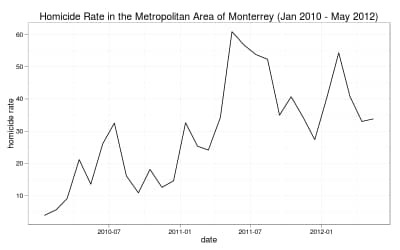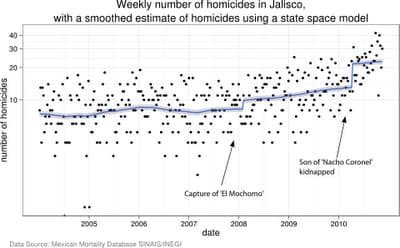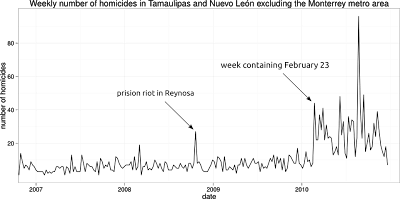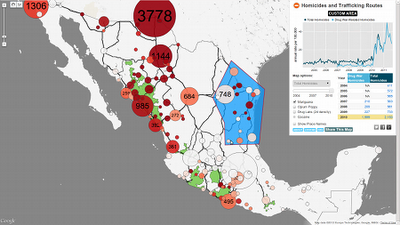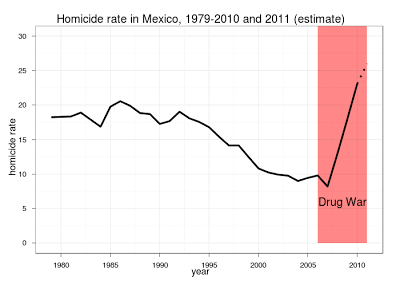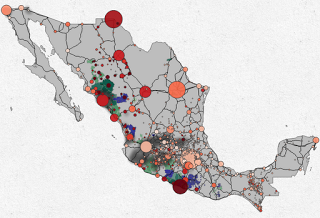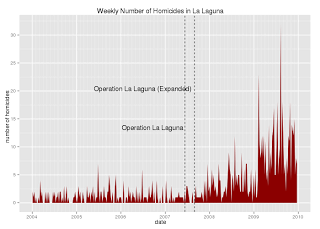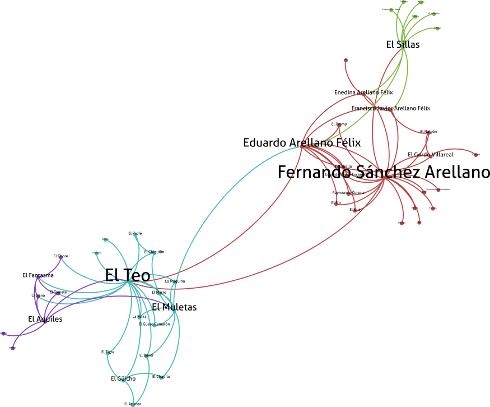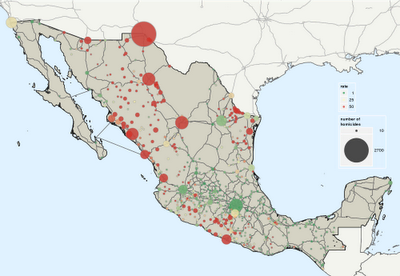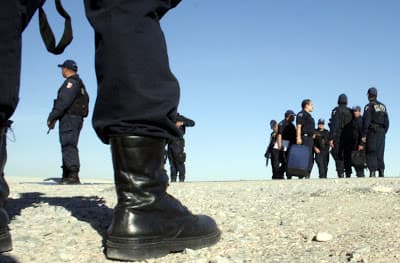 |
| Photo Credit: Jesús Villaseca Pérez |
Ever since March 2008 Ciudad Juárez began to register an alarming number of homicides becoming Mexico’s most violent city. According to the Mexican vital statistics system Ciudad Juárez (coterminous with the Juárez municipality) went from having just 202 murders in 2007 to 1,616 in 2008, 2,397 in 2009, and 3,686 in 2010.
Mexican and US officials explain the dramatic increase in violence as due to a conflict between the Sinaloa and Juárez Cartels. After a new governor was elected in October 2010 Ciudad Juárez does seem to have started turning around, but it is still an extremely violent city.
